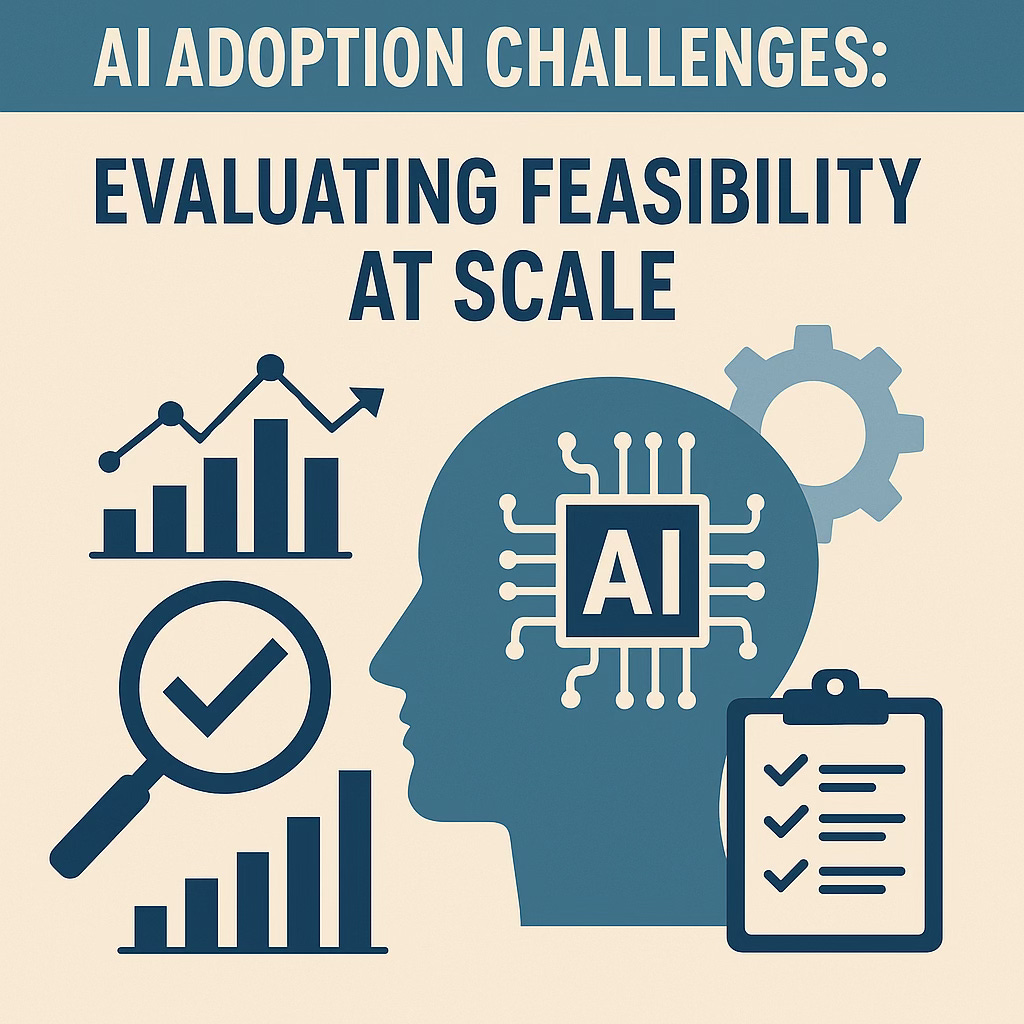AI Adoption Challenges
Evaluating Feasibility at Scale
In July, the Asia Growth Exchange (AGX) community convened for a virtual dialogue hosted by Erik Walenza on the challenges of evaluating artificial intelligence (AI) feasibility at scale within multinational industrial corporations. The session brought together digital transformation managers from the chemical, automotive, and technology sectors, alongside AI and startup ecosystem facilitators, to explore how organisations can better prioritise, structure, and scale AI initiatives in complex environments.
From the outset, there was agreement that AI pilots are appearing across laboratories, supply chains, and business units, but the results are often marginal when measured against the broader goals of the enterprise. One participant from a global chemical manufacturer described a project that, after analysis, saved only 0.22 headcount in the laboratory — a number too small to meaningfully register in financial results. The conversation shifted toward the need to consolidate isolated use cases into broader, more strategic structures. In some organisations, these are framed as AI journeys, each led by a designated owner who serves as a centre of gravity for related initiatives. In others, they take the form of digital scenarios, such as streamlining quality control processes, which encompass several interrelated use cases whose combined effect is designed to impact the P&L. The consensus was clear: isolated pilots, no matter how innovative, are insufficient without integration into larger programmes that align with strategic objectives and deliver measurable outcomes.
The discussion then turned to the interplay between top-down direction and bottom-up innovation. Managers shared examples of business units pursuing local vendors, building capabilities entirely from scratch, or leveraging major platforms like Palantir and Copilot for select use cases. One chemical manufacturer described building an internal platform for agentic AI deployment, connected to the Microsoft suite, enabling business units to develop AI agents while bypassing some of the administrative IT challenges. Another noted that while a bottom-up approach can yield creative energy, it quickly becomes necessary to consolidate these efforts and find synergies across them. Without senior-level sponsorship and mechanisms to bridge across departments, even well-designed solutions can fail to gain traction. The prevailing view was that productive AI adoption requires both the structure provided by top-down direction and the momentum generated by bottom-up experimentation, with systems in place to let the two coexist.
Proof of concept emerged as another focal point. Startups and vendors can deliver AI demonstrations in a matter of days, but technical success in a controlled setting does not automatically translate into impact at scale. Without clear KPIs, committed business ownership, and the means to navigate internal politics, many POCs lose momentum before they can be scaled. One participant noted that a POC represents only 20% of the overall journey; the remaining 80% lies in evaluating its broader implications, securing adoption, and ensuring integration. Even with executive endorsement, projects can encounter resistance from departments concerned about potential job displacement. The group agreed that while POCs can validate feasibility, genuine business value emerges only through deliberate scaling, organisational alignment, and measurable outcomes.
The role of generative AI (GenAI) was examined from several angles. Many current applications focus on incremental productivity gains such as accelerating requests for quotations or automating knowledge retrieval. Some participants argued that this underestimates the technology’s transformative potential. In their view, GenAI and agentic systems should be seen not just as tools to relieve pain points but as drivers of fundamental changes in how work is structured and executed. Others approached the subject from a more technical perspective, describing how agentic AI can orchestrate workflows by calling data, extracting insights, and triggering subsequent actions. By framing use cases around access to information and task automation, organisations can reuse data, skills, and processes across departments, amplifying value. Across these perspectives, there was alignment on the point that GenAI’s full impact depends on rethinking organisational structures, performance metrics, and the empowerment of AI agents to act autonomously within defined parameters.
Data readiness surfaced as a persistent bottleneck. Challenges included fragmented ownership, undocumented systems, and limited digital fluency among managers tasked with overseeing AI initiatives. One chemical manufacturer admitted uncertainty in assessing whether a vendor’s POC was truly state-of-the-art, given their own non-digital background. Another stressed that deploying agentic AI begins with preparing the data — cleaning and organising it so that AI systems can process it effectively. Participants generally rejected the idea of embarking on a comprehensive, top-down data architecture overhaul as a first step, considering it too slow and abstract. Instead, they advocated for a use-case-first approach. In practice, this meant documenting each business need in detail, articulating a vision for how agentic AI could address it, and then assessing the availability and condition of relevant data sources. One organisation captured all this on a single-page feasibility assessment, which became a gating factor before investment decisions were made.
In short: AI adoption at scale is rarely hindered by technical limitations; the greater obstacles lie in aligning strategy, structure, data, and culture to ensure that AI moves from promise to sustained business impact.
And therefore, for members of the AGX community, we’ll continue to explore AI adoption challenges and learn about practical approaches from peers facing similar challenges.


